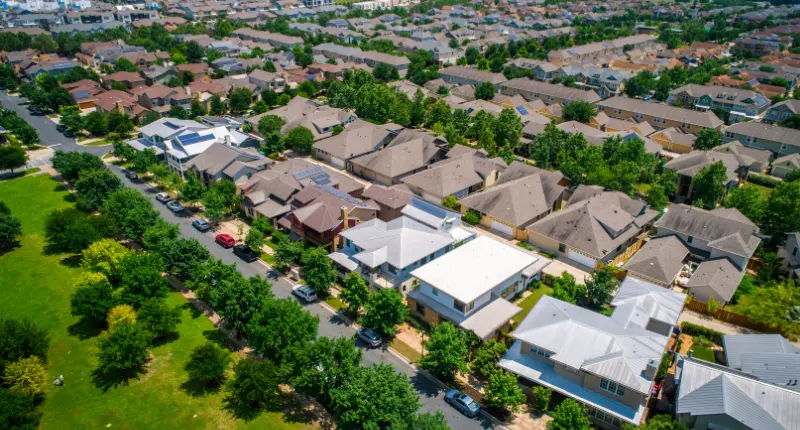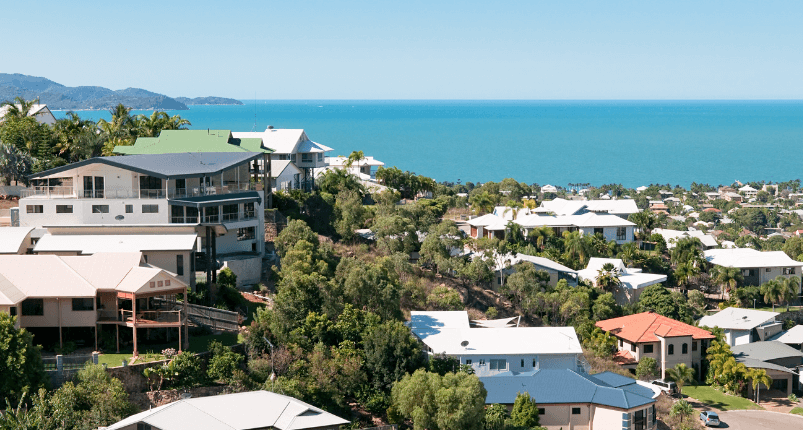
- Perth, Adelaide, and Brisbane were found to be high speed markets.
- Sydney and Melbourne recorded more modest value growth.
- Several housing markets in Hobart and Darwin were in decline.
Over four in five Australian property markets recorded value gains across October this year, according to the latest from CoreLogic.
Across the 4,506 house and unit suburbs analysed, the report found 82.4% recorded value growth in the three months to October. The number of house and unit suburbs that declined came in at 792 (17.6%).
Furthermore, 83.1% of Australia’s housing markets recorded a three monthly rise in values, while 80.6% of Australian unit markets saw values move north.
Portion of suburbs recording quarterly falls in values
| Region | Houses | Units | ||||
| Suburbs analysed | Quarterly fall # | Quarterly fall % | Suburbs analysed | Quarterly fall # | Quarterly fall % | |
| Sydney | 556 | 48 | 8.6% | 302 | 38 | 12.6% |
| Melbourne | 375 | 72 | 19.2% | 240 | 59 | 24.6% |
| Brisbane | 305 | 4 | 1.3% | 162 | 0 | 0 |
| Adelaide | 286 | 3 | 1.0% | 67 | 9 | 13.4% |
| Perth | 287 | 1 | 0.3% | 98 | 6 | 6.1% |
| Hobart | 44 | 18 | 40.9% | 15 | 4 | 26.7% |
| Darwin | 22 | 9 | 40.9% | 12 | 4 | 33.3% |
| Canberra | 83 | 24 | 28.9% | 39 | 32 | 82.1% |
| Combined capitals | 1958 | 179 | 9.1% | 935 | 152 | 16.3% |
| Combined regionals | 1304 | 372 | 28.5% | 309 | 89 | 28.8% |
| National | 3262 | 551 | 16.9% | 1244 | 241 | 19.4% |
Source: CoreLogic.
A multi-speed market
“It’s often noted that Australia is not ‘one housing market’ and we’re currently seeing increased diversity in capital city market performance,” said CoreLogic head of research, Eliza Owen.
“That’s reflected in city-wide growth rates, the various levels of supply that’s available in some cities over others, and it’s reflected in the different suburbs we analyse in this report.
“At one end of the spectrum, suburb-level analysis reflects the extraordinary growth trend across cities like Adelaide, Perth and Brisbane. In these cities, total listings levels are low, city-wide capital growth is running a bit over 1% per month, and migration trends from both overseas and interstate favour more housing demand.”
More modest growth was seen across Australia’s largest cities of Sydney and Melbourne, while the remainder saw prices either flat or falling.
High speed housing markets
The Perth, Adelaide, and Brisbane property markets were the top performers, with markets in decline in the single figures.
According to the report, Perth only saw one suburb, Mount Hawthorn, where housing values fell in the past three months. Despite that, Owenn observed a marginal dip of 0.2%.
“Remarkably, 98.1% of the house and unit markets across Perth rose in value over the past three months, and 96.3% of suburb dwelling markets in Perth were at record high values at the end of October.”
Adelaide’s house market was largely on the up, with only 3% recording a decline for the quarter. The report did find a ‘notable portion’ of unit markets in decline at 13.4% or nine of the 67 suburbs analysed.
All 162 Brisbane unit markets recorded value increases for the quarter, while of the 305 house markets, four declined. These suburbs were spread across both higher-end suburbs (Kalinga, Windsor) and affordable locations (Macleay Island, Lamb Island).
A more modest pace of growth
The Sydney and Melbourne markets were referred to by Owen as ‘mid-speed’, where growth was 2.5% and 1.2% respectively, capital city wide.
“The pace of growth across both markets has slowed from the middle of the year, when the June rate-hike surprised financial markets and many economists’ predictions,” said Owen.
“Currently, growth in Sydney markets are strongest across relatively expensive house markets, with Five Dock houses topping the three-month capital growth ranking (up 8.4%). In Melbourne, it was the more mid-priced unit market of Moorabbin which topped the list, increasing 7.4%.”
Markets in malaise
Across the remaining state and territory capitals, Canberra was found to be flat, while Hobart and Darwin recorded quarterly declines.
Owen observed Canberra had, “… relatively flat capital growth trends, and particular weakness in the unit market. 32 of 39 unit markets analysed in Canberra saw a quarterly decline, with the steepest fall in O’Connor, down -4.1%.”
The Tasmanian and Northern Territory capitals both saw just over two in five (41%) housing markets in a quarterly decline.
Owen said overall, Hobart home values ticked 0.3% higher in the past three months, but capital growth trends have been shaky, and total listings are trending around 47% higher than the previous five-year average.
“The city has seen value falls recorded in three of the past six months. Declines across Hobart houses were led by a 3.2% fall across the relatively expensive market of Sandford.”







